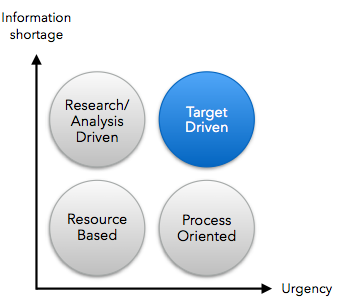Resource optimization in fast projects is like 5-years planning in the Soviet Union
During recent months I have discussed a lot about corporate management issues and especially about how create balance between extreme targets and resources.
Logically we can think that we set up targets first and then optimize resources accordingly. That’s very fine if we know all relevant information in the planning phase .
Problems arise when we are in a situation, when one of the crucial elements – namely time – is very limited. We have to consider whether we keep the targets (e.g. scope, quality) and/or whether we adjust available resources. Working alone, there is no problem because – at least in theory – we can influence things directly. But what happens if the project is bigger and there are tens or hundreds of people in the same project.
Let me tell you further.
When you and your partners realize that ”Oh! Our progress is 50% when it should be 75%”, what do you do actually? Do you make in-depth analysis of available resources? Do you ask project co-ordinator(s) to find out bottle-necks in the projects? Maybe. But if you really have experince of running several projects, you will do the following:
- You set-up a meeting with all key-players in the project.
- You check the nearest milestones approaching in a week or two.
- You discuss and agree about all practical actions to be done – with definite due dates, responsible(s) and optional receivers.
- You make crucial decisions of all things that block the progress.
- You follow the completion rate daily
In a way you skip the ”official” tracks and processes and you just solve the case. Later on – when the smoke has evaporated – you clarify the project data and with the help of coordinators you make new plans and longer term estimates.
It is important to understand that this does not mean that you should not take resources into account. If Mary says that she is not able to do a certain action by the due date, the correction is that either the due date is postponed or someone else will do that action. So you might change the targets locally but after that the show will go on according to targets.
In successful, urgent projects the driving force is the target, not resources
In the worst case scenario the organization has created (and invested in) a very rigid methodology and systems (e.g. ERPs), which have to be fooled when actual problems and urgency take place.
Situation is like in past Soviet Union, where centralized management created 5-years detailed level plans and workers tried to fulfill them and at the same time tried to get something to eat.
We have to understand which kind of methodologies are used in which kind of problems.
Please give your comments!
Pekka Ylisirniö
